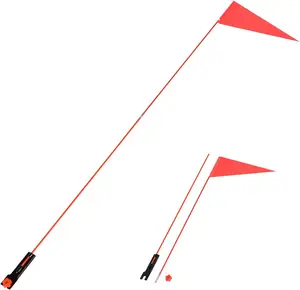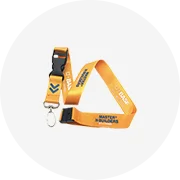Safety flags are versatile tools that contribute significantly to safety and communication in various environments.
Uses of safety flags
Safety flags play a crucial role in directing traffic and ensuring road safety. Traffic flags are used to signal drivers and pedestrians, mark detours, or indicate potential dangers on the road. Traffic wardens use traffic control flags to control traffic on the road. In construction zones, high visibility flags are employed to alert workers and passersby to potential hazards. At beaches, lifeguards use flags to indicate water conditions, such as safe swimming areas, strong currents, or potential hazards like marine life. In disasters or search and rescue operations, safety flags may be used to mark safe zones. Safety flags for trucks enhance visibility and indicate potential hazards. An airfield safety flag is a crucial visual indicator used at airports to convey information about wind direction and intensity. This helps pilots during takeoff and landing procedures. Safety flags for vehicles are essential for increasing visibility on the road, particularly for oversized loads. The safety load flag is an indispensable tool in transportation. It signals that a vehicle is carrying a load that requires caution and attention from other road users.
Different sizes & shapes of safety flags
Safety flags come in a variety of sizes and shapes, tailored to different needs and environments. From the standard rectangular flags to triangular pennants, and even circular markers, each shape serves a specific purpose. Rectangular flags offer high visibility and are commonly used in construction sites and roadwork zones. Triangular pennants, on the other hand, are often seen on vehicles like bicycles and ATVs, as their shape helps to reduce wind resistance while maintaining visibility. Circular flags are employed in maritime contexts, signaling hazards or marking safe zones. These diverse shapes ensure that safety flags can effectively communicate warnings and directives across various settings, enhancing safety for workers, motorists, and pedestrians alike.
How to mount/attach the flag to a vehicle or pole
Mounting or attaching a safety flag to a vehicle or pole requires careful consideration to ensure it remains securely in place while also maximizing visibility. For vehicles, such as bicycles, ATVs, or construction equipment, mounting systems typically involve attaching the flag to a flexible pole affixed to the vehicle. This can be achieved through various means, including clamps, brackets, or specially designed flag holders. These attachments must be sturdy enough to withstand wind resistance and vibrations. When mounting a safety flag to a pole, such as in construction sites or hazard zones, the flag is often attached using simple mechanisms. These can be ties, clips, or grommets. The pole itself should be securely anchored to the ground or structure to prevent it from falling or being displaced by wind or other external forces. Additionally, the height of the pole should be adjusted to ensure the flag is easily visible from a distance.
Buyers can buy a wide range of safety flags on Alibaba.com. They can buy safety flags from global suppliers at cheap prices.

































 浙公网安备 33010002000092号
浙公网安备 33010002000092号 浙B2-20120091-4
浙B2-20120091-4